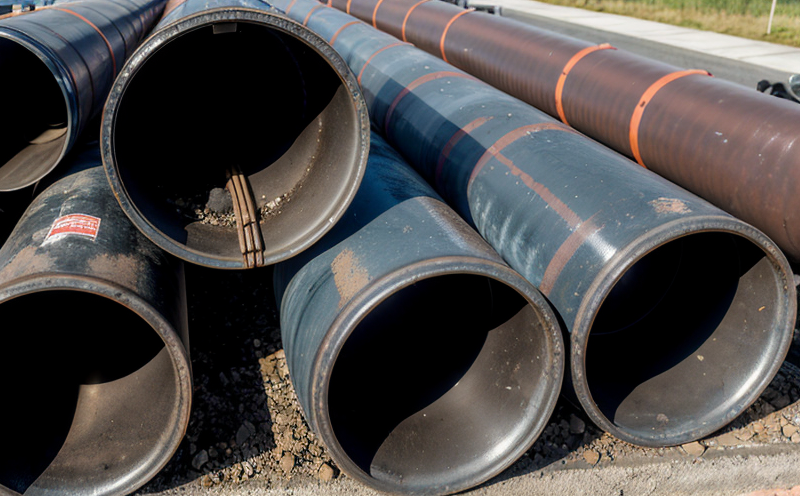IEC 60529 IP Protection Testing of Plastic Hose Enclosures
The International Electrotechnical Commission (IEC) standard IEC 60529 defines the method for rating and marking enclosures according to their protection against foreign objects, dust, water, and other environmental factors. This standard is widely used in the electrical and electronic industries as it ensures that products are designed to meet specific levels of protection required by various applications.
When it comes to plastic hose enclosures, IEC 60529 IP testing is crucial for ensuring the integrity and performance of these components under environmental stress. The testing process involves subjecting a specimen hose enclosure to different environmental conditions, including immersion in water, exposure to dust particles, and impact with foreign objects, among others.
The test procedures outlined in IEC 60529 are designed to simulate real-world operating conditions that the hoses may encounter during their lifecycle. This ensures that any potential issues can be identified early on, allowing for necessary modifications before production begins or existing products can be improved. By adhering to this standard, manufacturers and quality managers can guarantee compliance with international regulations while also improving product reliability and safety.
To perform IEC 60529 IP testing on plastic hose enclosures effectively, it is essential to follow strict protocols that include selecting appropriate test methods based on the specific IP rating required. For instance, if an IP rating of IPX7 is needed (protection against immersion in water up to 1 meter depth), then the specimen must be submerged for a specified duration and subjected to other relevant tests as outlined in IEC 60529.
The process typically involves multiple stages where specimens are exposed to various environmental stresses, followed by visual inspections or more advanced non-destructive testing techniques such as X-ray imaging if necessary. Once all required tests have been completed successfully, the results can then be documented according to standard reporting formats provided within IEC 60529.
It is important for both quality managers and compliance officers working in this sector to understand not only what these tests entail but also why they are so critical. By ensuring that their products meet stringent environmental protection standards, companies can enhance customer confidence while reducing potential risks associated with product failures due to insufficient protection.
In summary, IEC 60529 IP testing plays a vital role in validating the durability and reliability of plastic hose enclosures used across various industries. Through rigorous evaluation under controlled laboratory conditions, manufacturers can ensure that their products will perform consistently throughout their intended service life even when exposed to challenging environmental factors.
Why It Matters
The importance of IEC 60529 IP testing for plastic hose enclosures cannot be overstated. Compliance with these standards ensures that the products meet strict quality control requirements set forth by international bodies like the International Electrotechnical Commission (IEC).
- Enhanced Reliability: By following IEC 60529 guidelines, manufacturers can significantly reduce the risk of product failure caused by improper environmental protection.
- Increased Customer Satisfaction: When consumers know their products have undergone rigorous testing to ensure they meet high safety and performance standards, it fosters trust between customers and brands.
- Compliance with Regulations: Many countries mandate that certain types of electrical equipment must comply with IEC 60529 IP ratings. Non-compliance can result in legal penalties and loss of market access for non-conforming products.
- Improved Product Design: Through continuous improvement based on test results, designers can refine their product designs to better suit diverse application needs while maintaining robust protection against environmental elements.
The stakes are particularly high when dealing with critical infrastructure such as pipelines or industrial machinery where downtime due to equipment failure could lead to significant economic losses. Ensuring that your plastic hose enclosures meet IEC 60529 IP standards is not just good practice; it's essential for maintaining operational efficiency and safety.
Benefits
- Enhanced Product Quality: Ensures that the plastic hose enclosures meet high quality standards set by industry leaders like IEC.
- Increased Customer Confidence: Demonstrates commitment to excellence, leading to higher customer satisfaction and loyalty.
- Compliance with International Standards: Helps businesses avoid penalties associated with non-compliance while opening doors to global markets.
- Improved Operational Efficiency: Reduces downtime caused by equipment failures due to improper environmental protection.
The benefits extend beyond just meeting regulatory requirements; they contribute significantly towards building a strong brand reputation and fostering long-term relationships with customers. Additionally, successful completion of IEC 60529 IP tests can provide peace of mind knowing that the products have undergone rigorous quality assurance measures designed to ensure reliability and safety.
Use Cases and Application Examples
The application of IEC 60529 IP testing in plastic hose enclosures is particularly relevant for industries where high levels of environmental protection are crucial. Here are some specific use cases:
- Pipeline Insulation: Ensures that insulation materials used within pipelines remain effective even when exposed to harsh weather conditions.
- Medical Equipment: Critical components must be protected against contamination from both internal and external sources, especially in sterile environments like hospitals.
- Automotive Manufacturing: Protects electrical systems installed inside vehicles from damage caused by road debris or water intrusion during wash cycles.
These examples illustrate how IEC 60529 IP testing contributes to improving product performance and reliability in diverse applications. By adhering strictly to these standards, manufacturers can enhance their competitive edge and ensure that customers receive dependable solutions tailored to meet stringent environmental demands.





